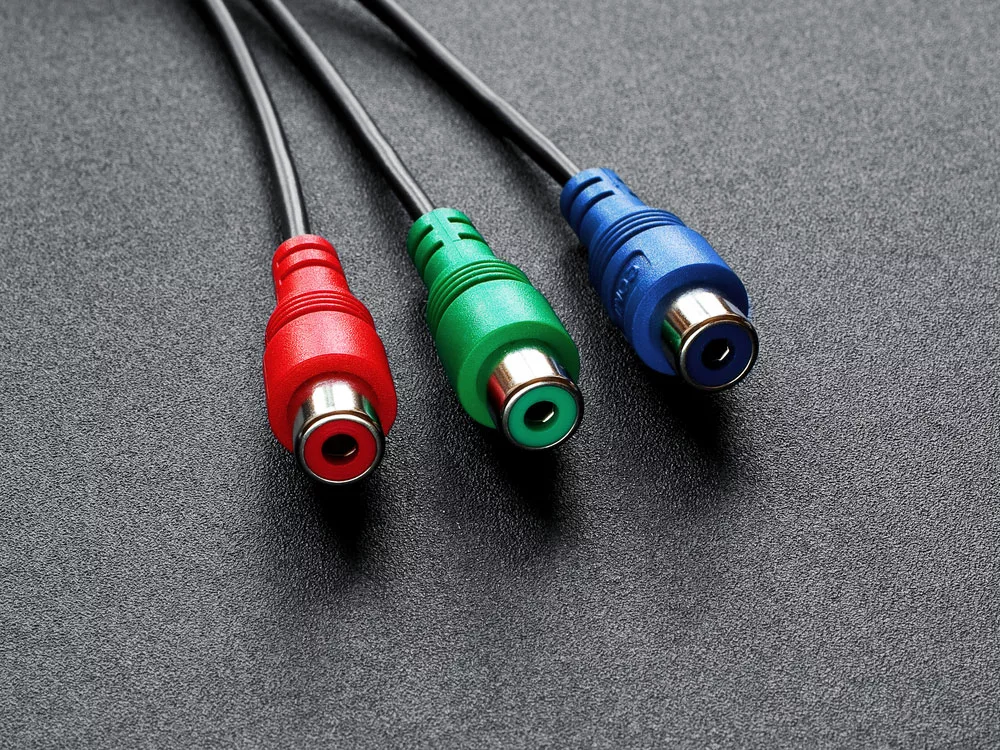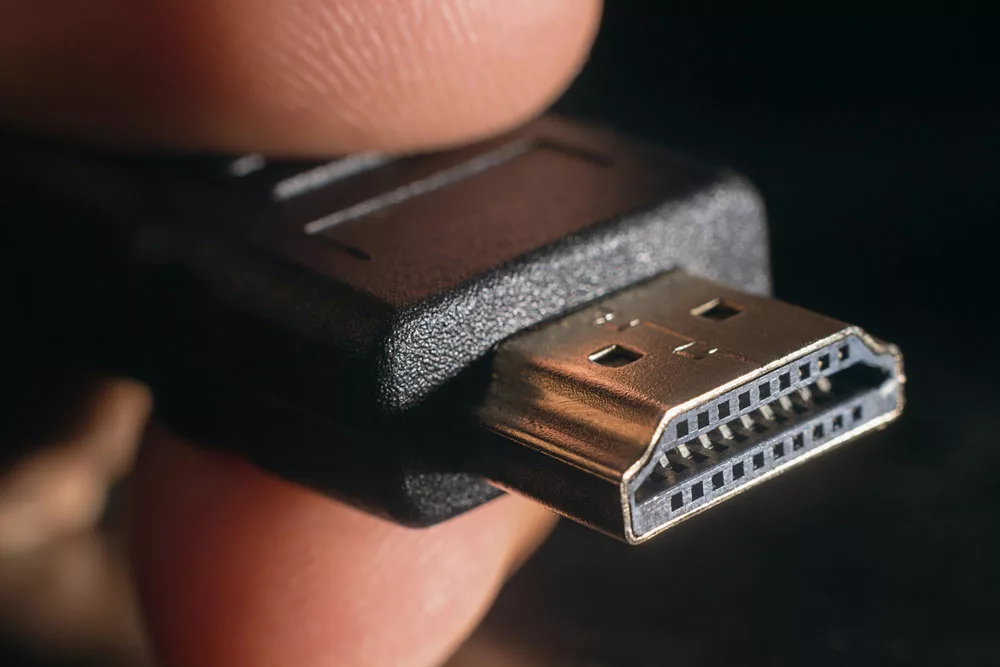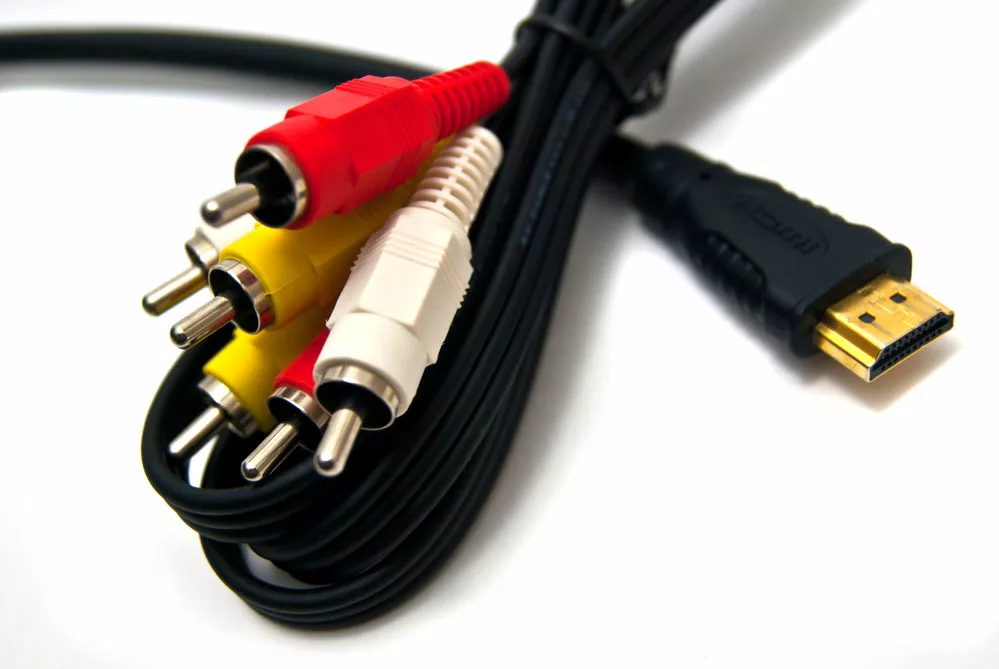Component cables vs. HDMI (High Definition Multimedia Interface), although different, perform the same task; to play audio and videos on the devices.
You can choose among these two options depending upon the type of application. Let’s look into their differences further deeply.
Table of Contents
- Component Video Cable Basics
- HDMI Cable Basics
- Comparison Table for HDMI and Component Cable
- Isn’t HDMI Digital Just Better Than Component Analog?
- Component Video Vs. HDMI: How to choose?
- Conclusion
Component Video Cable Basics
Component Video cables are an excellent source of playing media through projectors and PCs. However, using these cables might not be a good option due to the emergence of other devices.
What Does a Component Video Cable Look Like?
It has three cables to connect the devices with red, blue, and green colors. That way, you will distinguish between each wire and the place where it will insert. Hence, sticking to the conventional method is better, connecting the red to red, green to green, and blue to blue connection port.
Moreover, you can buy any RCA cable as long as it has RGB wires, and can use it with endless devices. However, other component wire types have different color coding, so that you would be confused about its usage.
What Does a Component Connection Do?
When you connect with a component wire, it transmits an analog signal between the two devices. These signals have higher quality and good image resolution if there is no copyright restriction on the content.
Component connection is a good option for video transfer since you can get this interface on most devices.
The such widespread application makes these wires best for visual data transfer if you do not have access to other modern components.
However, component ports may not support audio signals, so you need to buy a separate connection system to send the sound.
Component Cable vs. HDMI: How Does Component Video Work?
Component video splits the signals into two or more channels, making the image better than the single-channel result. By this definition, it means that there is more than a single component video type that includes
- S-Video ( splits into two channels)
- YPbPr (splits into three channels)
- RGB (splits into three channels).
The components cables that we use are usually YPbPr type, which stands for
- Y for luma (brightness) [Connects to Green RCA port]
- Pb for differentiating between blue and luma [Connects to Blue RCA port]
- Pr for differentiating between red and luma [Connects to Red RCA port]
The system can create all the hues supporting high-definition and complete pictures with these cables.

A simple RGB component cable
HDMI Cable Basics
In modern devices, component cables are replaced with HDMI technology, now a standard interface for all of them. Hence, you can see these cables in most home theater systems.
Component Cable vs. HDMI: What Does an HDMI Cable Look Like?
Here, you can transfer both audio and video on a single cable. Moreover, some brands also offer gold-plated or silver HDMI connectors to improve signal quality.
Its shielding is flexible plastic or nylon braiding, making installation easier in tight plenum spaces.
Component Cable vs. HDMI: What Does an HDMI Connection Do?
HDMI transmits data between modern AV components, including projectors, laptops, PCs, gaming consoles, or even smart TVs.
Hence, on any device where you will need to communicate with video and audio, you will see an HDMI interface on it.
For video, it can support HD, and Ultra HD qualities, along with 4k and 8k. Also, for audio, it can send a simple PCM two-channel stereo to 8-channel formats like Master Audio or Dolby Atmos.
Over time, HDMI technology has evolved while adding different specifications, like HDMI v.1.4, HDMI 2.0, and HDMI 2.1.
Being the latest one, HDMI 2.1 support 4k/120p and 8k/60p video and new gaming features like ALLM, QMS, and VRR.
The older versions, however, had limited features. Thus the result for old HDMI cables and devices is not of quality as the new ones.
Component Cable vs. HDMI: How Does an HDMI Work?
HDMI works on the same principle as component cables, i.e., using three colors to make the whole picture.
It sends the signals as these three hues, and the receiver syncs them to display new frames.
Additionally, the High-definition Cable sends the signals over three data streams in a format named TMDS, short for “Transition Minimized Differential Signaling.”
In TMDS format, vertical and horizontal syncs add, along with green and red channels upon a blue channel. In addition to this, you can adjust the HDMI setting using the color-difference option.

Caption: Black HDMI cable
Comparison Table for HDMI and Component Cable
Here is a simple comparison of the features of both cables.
| Parameters of comparison | HDMI | Component |
| Definition | High Definition Multimedia Interface or HDMI sends audio-visual data from one device to another using one cable. You can use it with Modern laptops and projectors. | Component cables send audio-visual information from one predefined device to a screen using multiple cables, usually RGB. |
| Signal | Digital | Analog |
| Wires required | Only one | More than One |
| Cables for audio and video | Same | Different Cables for each audio and video |
| Noise | No effect | Affects the quality of signals |
| Quality | High | Lower than HDMI |
| Bandwidth required | High | Can work on Low Bandwidth |
| Signal transmission | Can transmit over long distances | Can transmit over shorter distances |
| Shape of connectors | Flat with multiple pins | Round with one pin |

HDMI and Component cables
Isn’t HDMI Digital Just Better Than Component Analog?
People assume that with tech being evolved day by day, it’s just getting better, and there is no downfall to it. However, the reality might not be what it always seems.
Analog signals usually degrade and face data loss, while digital signals are error-free. But, some environmental factors can also lead to information loss in HDMI cables.
Also, there is no chance of error correction in these cables once data is lost. It might not be prominent in shorter cables, but this can be a major factor over longer distances.
On the other hand, the analog signals transfer finely in shorter distances and even longer distances, about 200ft without a booster.
Hence, if the build of a component cable is strong, signal failure over the network is less likely.
Component Video Vs. HDMI: How to choose?
HDMI is best if your wires are prone to get damaged by rats or other factors. It is because, unlike component cable, HDMI is a single cable giving you the best video quality to watch your favorite content.
Using the latter reduces the number of wires and the complexity with which it comes.
One interesting thing to note is that these cables may give varying results as the devices change. Likewise, HDMI gives you a clearer picture of one device, while component video cables might suit you best for the other.
The picture quality also depends on the type of gadget with which you will link these cables.
Hence, the best technique will be investing in both cables and trying them on with your PC or TV.
Then select the one that you think is giving you better results. We assure you that your investment won’t get wasted since these cables are universal, and you can hook up the other one some other time.
Conclusion
While comparing the HDMI and the component video cable, there is no clear answer that who wins.
It is due to their distinct features that come in handy during different needs. Both have pros and cons, which you will experience when you get your hands on them.
Because of it, their performance differs as the kind of device changes. Thus, it’s better to try and test the cables in your application and find which is best.
We offer wiring harness solutions and custom cable assemblies to make your connection reliable.
